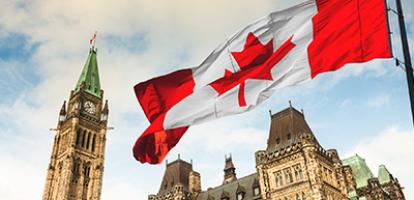With inflation pushing 6 per cent, and federal debt up about half-a-trillion dollars in two years, Canadian macroeconomic policy is a mess. It will get worse. The Bank of Canada is moving to get inflation down – applying the brakes. The federal government’s budget this week will show tens of billions more borrowing and spending – foot firmly on the gas. Monetary tightening and fiscal excess prefigure a wild economic ride ahead. Perhaps a recession.
Saying “recession” might seem alarmist. The economy is on a tear. Employment is well above, and unemployment well below, where they were pre-COVID. Economywide spending rose an eye-popping 12 per cent over the past year.
The problem, though, is that this surge owes so much to the Bank of Canada and the federal government’s feet on the accelerator. Measures of labour shortages are at historic highs. Three-quarters of that 12-per-cent surge in spending reflected not real growth, but higher prices. Our economy is over the speed limit.
The problem with monetary policy is more obvious. Partly because the results of monetary excess appear faster. Inflation well above the Bank of Canada’s 2-per-cent target is in our faces every time we fill our cars, visit the grocery store, and pay our bills. And partly because the central bank admits it got it wrong. Bank officials are warning that interest rates may rise further and faster than people were expecting.
The problem with fiscal policy is less obvious. Bigger government crowds private activity gradually. Compounding interest payments haven’t yet squeezed the rest of the federal budget. Also, and unlike the Bank of Canada, the federal government still says everything is fine.
Deficits were a signature policy for the government even before COVID-19 set the stage for unprecedented borrowing with equally unprecedented lack of accountability – not even a budget in 2020. Concerns about out-of-control finances led the Finance Minister, in her Fall Economic Statement that year, to describe indicators – “fiscal guardrails” – that would trigger a return to fiscal prudence. By the time of the 2021 update, the economy was clearly at or past them. But that update said nothing about guardrails or prudence. Since then, we’ve had commitments to major new programs, mostly financed by more debt.
Meanwhile, government running pedal-to-the-metal is squeezing the rest of the economy. Public-sector employment is up 8 per cent since before the pandemic – no wonder businesses have trouble hiring. With no slack left in the economy, consumption is crowding out private investment. The stock of business plant, equipment and intellectual property products per worker is falling.
That brings us back to monetary policy. The Bank of Canada itself is highlighting now that low business investment means weak growth in productive capacity. And weak growth in productive capacity means that less of each additional dollar of debt-fuelled spending induces real output, and more of it induces higher prices.
The resulting surge in inflation has taken everyone by surprise. So far, the bank has only tapped the brake. Even after a quarter-point rise in February, the bank’s policy interest rate is more than four percentage points less than the rate of inflation. It may need to rise that far to cool things off. With the U.S. Federal Reserve also signalling that it is ready to jam on the brakes, concerns about a slowdown or worse are growing.
As for fiscal policy, higher interest rates will raise the cost of servicing the federal government’s rapidly rising debt, even as flagging growth damps its revenues. Its foot will come off the accelerator, and if interest rates and concerns about mounting debt become severe enough, it may shift to the brake itself. Another reason why a breakdown – a recession sometime in the next couple of years – is a serious prospect.
To improve our chances of navigating the economic road safely in the years ahead, the federal government should acknowledge that its spending and borrowing have exceeded what the Canadian economy needed, and are making us vulnerable. It needs to ease off the gas – which, in turn, will let the Bank of Canada ease off the brake. The feds’ foot on the accelerator and the bank’s foot on the brake is driving us toward a breakdown.
William Robson is CEO of the C.D. Howe Institute.





